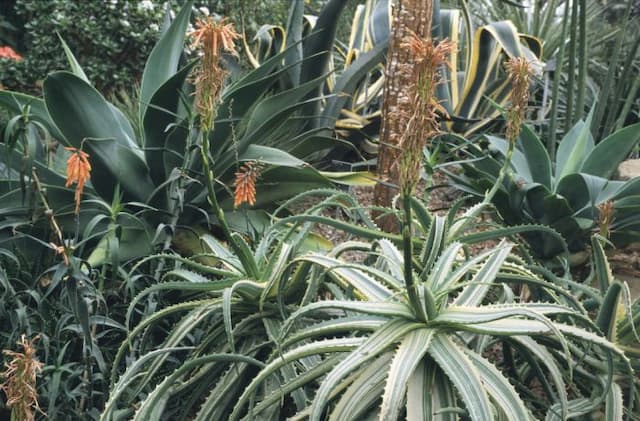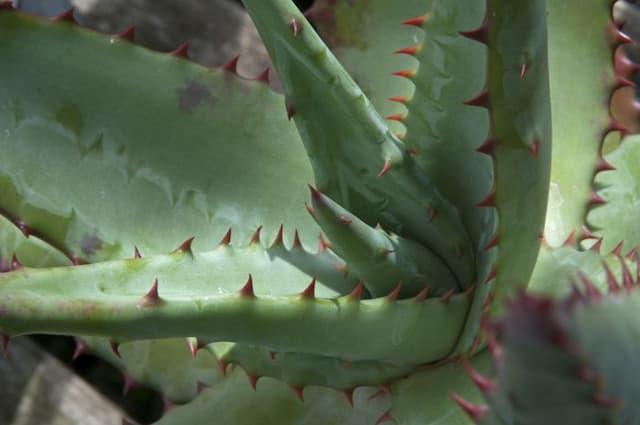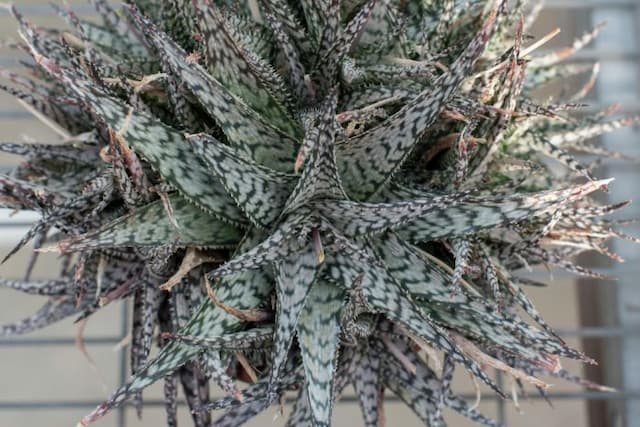Red Hot Poker Kniphofia 'Buttercup'

ABOUT
The plant commonly known as 'Buttercup' is notable for its distinctive flower spikes. A perennial bursting with vibrant color, it features a dense clump of strap-like, green leaves that emanate from its base. These leaves set the stage for the true show-stoppers: the flower spikes. The flowers are arranged on tall, upright stalks that rise above the foliage, presenting themselves in a gradation of warm colors. At the bottom of the spikes, the buds and flowers are bright yellow, reminiscent of the common buttercup flower, hence the name. As the eye moves upward along the spike, the color transitions to a paler hue, offering a gradient effect that is quite striking. The flower spikes, with their tubular shape, are attractive to various pollinators such as hummingbirds and bees, who are drawn in by both their appearance and the nectar they provide. When in bloom, the 'Buttercup' adds a dramatic burst of color to the garden and creates a visual interest that can complement many garden designs or provide a focal point all on its own. The contrast between the vivid flowers and the lush greenery is particularly eye-catching, ensuring that wherever this plant is grown, it's likely to become a centerpiece during its blooming season.
About this plant
 Names
NamesFamily
Asphodelaceae.
Synonyms
Red Hot Poker, Torch Lily, Poker Plant.
Common names
Kniphofia 'Buttercup'.
 Toxicity
ToxicityTo humans
Red hot poker plants, including the cultivar 'Buttercup', are not considered highly toxic to humans. However, as with many plants, they may cause irritation if ingested or if sensitive individuals handle them. Symptoms could include mild stomach upset, nausea, vomiting, or diarrhea if ingested, and skin irritation or an allergic reaction upon contact. It is always advisable to wear gloves when handling plants if you have sensitive skin or to prevent any unforeseen reactions.
To pets
Red hot poker plants are also not highly toxic to pets, but they could cause mild gastrointestinal upset if ingested. Symptoms in pets that have consumed parts of the plant might include vomiting, diarrhea, and drooling. As with humans, it’s best to prevent pets from eating or chewing on plants, including Kniphofia 'Buttercup', since even non-toxic plants can cause vomiting or diarrhea in pets due to the fibrous plant material.
 Characteristics
CharacteristicsLife cycle
Perennials
Foliage type
Evergreen
Color of leaves
Green
Flower color
Yellow
Height
2-3 feet (60-90 cm)
Spread
1-2 feet (30-60 cm)
Plant type
Herb
Hardiness zones
6
Native area
South Africa
Benefits
 General Benefits
General Benefits- Attracts pollinators: Kniphofia 'Buttercup', commonly known as Red Hot Poker, is known for attracting bees, butterflies, and other beneficial pollinators to the garden.
- Drought tolerance: Once established, Red Hot Poker plants are quite drought-tolerant, making them suitable for xeriscaping and water-wise gardening.
- Low maintenance: This perennial plant generally requires minimal care after planting, needing only occasional watering and deadheading to thrive.
- Long blooming period: Red Hot Poker has a lengthy blooming time, which can last from spring to late summer, providing vibrant color for an extended season.
- Deer resistance: Kniphofia 'Buttercup' is typically resistant to deer, making it an excellent choice for gardens in areas with high deer populations.
- Architectural interest: With its tall flower spikes and striking color, Red Hot Poker adds vertical interest and a unique visual appeal to garden landscapes.
- Versatility in the garden: Red Hot Poker can be used in a variety of garden settings, including borders, beds, and as a focal point.
- Soil adaptability: Kniphofia 'Buttercup' can adapt to a wide range of soil types, though it prefers well-draining soil.
 Medical Properties
Medical PropertiesThis plant is not used for medical purposes.
 Air-purifying Qualities
Air-purifying QualitiesThis plant is not specifically known for air purifying qualities.
 Other Uses
Other Uses- As a natural dye: The vibrant flowers of the Red Hot Poker can be used to produce yellow and green dyes for fabrics.
- Eco-friendly pest control: Their nectar-rich blooms attract predatory insects which help control garden pests naturally.
- Photography subject: Red Hot Poker's unique flower spikes make for an interesting and unusual subject for photographers.
- Thematic gardens: They can be incorporated into fire-themed gardens due to their flame-like flower appearance.
- Hummingbird garden inclusion: These plants are great for attracting hummingbirds, adding dynamism to any garden space.
- Seasonal interest: Red Hot Poker plants can provide seasonal interest in garden design with their late spring to summer blooming period.
- Floral arrangements: Although not typical, their long-lasting blooms can be used to create exotic and lasting floral arrangements.
- Garden borders: Their height and structure make them excellent choices for adding vertical elements to borders.
- Erosion control: Their robust root systems can be effective in stabilizing slopes and banks in landscaped areas.
- Teaching tool: Red Hot Pokers can be used in educational settings to demonstrate plant adaptation and pollination strategies.
Interesting Facts
 Feng Shui
Feng ShuiThe Red Hot Poker is not used in Feng Shui practice.
 Zodiac Sign Compitability
Zodiac Sign CompitabilityThe Red Hot Poker is not used in astrology practice.
 Plant Symbolism
Plant Symbolism- Standing Out - With its unique and striking flower spikes, Red Hot Poker symbolizes the importance of being noticed and not blending into the background.
- Vibrancy - The vivid colors of the plant’s flowers are often associated with a vibrant and lively energy, suggesting an enthusiastic or passionate approach to life.
- Attraction - Red Hot Poker is known to attract hummingbirds and other pollinators, symbolizing allure and the ability to draw in others.
- Strength - The sturdy, upright nature of the plant’s flower spikes can represent strength and resilience in the face of adversity.
- Warmth - The warm hues of Red Hot Poker flowers can symbolize warmth of emotion, hospitality, or a warm demeanor.
 Water
WaterRed Hot Poker plants, including the Kniphofia 'Buttercup', prefer consistent moisture particularly during their growing season in spring and summer, however, they do not like to be waterlogged. Water approximately once a week, providing about 1 inch of water to ensure the soil is moist but not saturated. During periods of high heat or drought, increase watering frequency to maintain moisture levels. In cooler weather or when the plant is not actively growing, reduce watering to prevent rot. It is important to water the plant at the soil level and avoid getting water on the foliage to minimize the risk of disease.
 Light
LightRed Hot Poker plants need full sun to thrive, so the Kniphofia 'Buttercup' should be positioned in a location where it can receive at least six to eight hours of direct sunlight per day. These plants enjoy bright and sunny spots, which encourage abundant flowering. A south-facing garden or landscape area that provides unobstructed sunlight will help this plant achieve optimal growth and blossoming.
 Temperature
TemperatureRed Hot Pokers, including the Kniphofia 'Buttercup', perform best in areas with a temperature range between 60°F and 75°F, but they can tolerate temperatures as low as 20°F and as high as 90°F. Proper acclimatization and mulching can help protect the plant's roots from freezing temperatures. Hot, sunny conditions are typically well-tolerated during the bloom periods of late spring to early fall.
 Pruning
PruningPruning the Red Hot Poker plant involves removing spent flower spikes to encourage more blooms and cutting back foliage to the ground in late fall or early winter, after the first frost. Prune the plant dead foliage and damaged stems once a year, typically after the flowering has ceased or when the plant begins to look untidy. Deadheading, or the removal of faded flowers, can be done throughout the blooming period to maintain the plant's appearance and vigor.
 Cleaning
CleaningAs needed
 Soil
SoilRed Hot Poker 'Buttercup' thrives in well-draining soil enriched with compost or other organic matter. A soil pH range of 6.0 to 6.5 is ideal for this perennial. To create the best soil mix, combine two parts garden soil, one part perlite or coarse sand, and one part compost or aged manure to ensure both good drainage and fertility.
 Repotting
RepottingRed Hot Poker 'Buttercup' typically doesn't require frequent repotting as it is a hardy perennial. Repotting every 3-4 years, or when the plant outgrows its current container, is usually sufficient. Divide clumps in the spring or early fall to manage size and propagate.
 Humidity & Misting
Humidity & MistingRed Hot Poker 'Buttercup' is adaptable to a wide range of humidity conditions and does not require a specific humidity level. It is generally tolerant of the humidity levels found in most natural outdoor environments.
 Suitable locations
Suitable locationsIndoor
Place Red Hot Poker in bright light, keep soil slightly dry.
Outdoor
Plant in full sun, well-draining soil; water moderately.
Hardiness zone
6-9 USDA
 Life cycle
Life cycleThe life cycle of Kniphofia 'Buttercup', commonly known as Red Hot Poker or Torch Lily, begins with seed germination, which occurs in warm soil conditions with plenty of light. Seedlings emerge and establish a rosette of narrow grass-like leaves. As the plant matures, it develops a deep root system that enables it to survive periods of drought. In the second or third year, usually in late spring to early summer, it sends up sturdy flower stalks bearing dense, spike-like clusters of tubular flowers that transition from yellow to green as they age. After flowering, seedheads form, which can be deadheaded to encourage additional blooms or left to self-seed in conducive growing conditions. The plant may undergo a period of dormancy in the winter, but in milder climates, the foliage remains evergreen, and with proper care, it can last for several years, often requiring division every few years to maintain vigor.
 Propogation
PropogationPropogation time
Early Spring
Propogation: The most popular method of propagating a Torch Lily, specifically the Kniphofia 'Buttercup', is by division. This process is ideally undertaken in the spring or early fall. To divide Torch Lilies, carefully lift the plant from the ground with a spade, ensuring that you keep a generous amount of soil around the roots. Gently separate the clump into smaller sections, each with at least one growing point or fan of leaves. Replant these divisions at the same depth they were growing before, spacing them about 18 inches (approximately 45 centimeters) apart to allow for adequate growth. Keep the newly planted divisions well-watered to help them get established. Division not only helps to propagate new plants but also rejuvenates older clumps that might be flowering poorly.









